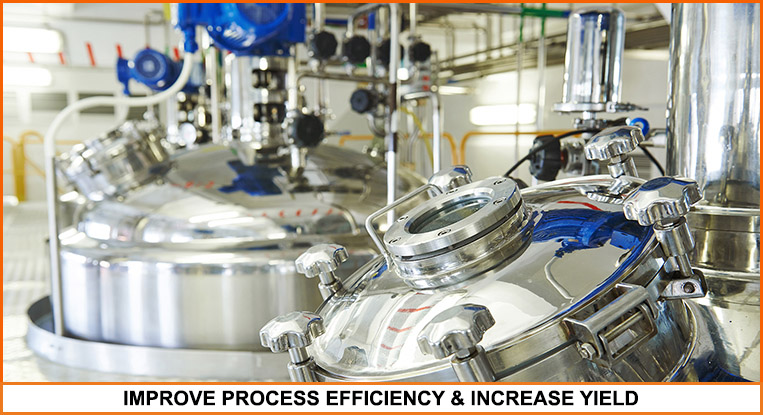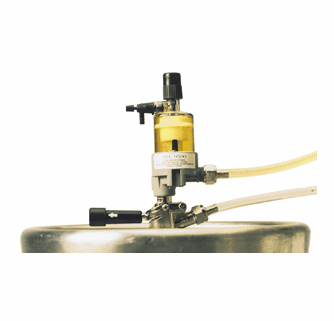Discovering Cutting-Edge Foam Control Technologies for Sustainable Practices
Discovering Cutting-Edge Foam Control Technologies for Sustainable Practices
Blog Article
Understanding the Value of Foam Control in Industrial Processes
In commercial procedures, foam control is usually a neglected yet vital element that directly influences functional performance and product stability. The existence of too much foam can bring about significant challenges, consisting of interrupted blending and decreased reaction kinetics, which may ultimately influence item top quality throughout numerous fields such as drugs and food manufacturing. Comprehending the subtleties of foam administration, including effective strategies and potential improvements, elevates important inquiries concerning best techniques and future innovations. What are the ramifications for sectors striving for boosted performance and compliance?

The Duty of Foam in Market
Foam plays a substantial duty in different commercial processes, affecting both effectiveness and item quality. In fields such as food and drink, pharmaceuticals, and petrochemicals, foam can offer both damaging and valuable objectives. In the food sector, foam stablizing is critical throughout processes like whipping lotion or creating beer, where the top quality of foam directly affects consumer perception and item attributes.
In chemical manufacturing, foam can work as an obstacle, stopping the appropriate mixing of reagents, which can bring about suboptimal yields and insufficient reactions. Alternatively, in processes like flotation in mineral handling, foam is utilized to divide beneficial minerals from waste material, improving recuperation prices.
Moreover, in wastewater treatment, foam formation can show the visibility of organic issue, working as an important parameter for process surveillance. The capability to regulate foam is important for keeping procedure stability and optimizing operational prices. Comprehending the duty of foam in industrial applications enables operators and engineers to implement efficient foam monitoring strategies, making sure that foam contributes favorably to general procedure performance while minimizing its possible disadvantages.
Typical Obstacles of Foam Development
Many markets face significant obstacles because of the unintended formation of foam throughout various processes. Foam can interrupt the efficiency of procedures, resulting in increased downtime and higher operational prices. In sectors such as drugs, food and drink, and wastewater therapy, foam can prevent mixing, decrease product yield, and make complex separation procedures.
Furthermore, foam can create safety dangers by obstructing clear visibility, which is important in settings where specific dimensions and monitoring are necessary. The presence of foam can likewise cause devices damage, as excessive stress accumulation might occur in reactors and tanks.
Additionally, the requirement for regular intervention to manage foam can draw away sources and labor, eventually affecting performance. Ecological policies position one more challenge, as excessive foam can result in non-compliance issues in effluent discharge, requiring additional therapy procedures.
Influence on Product High Quality

In chemical manufacturing, foam can hinder response kinetics by limiting gas-liquid contact, leading to insufficient responses and lower yields. This not just influences the performance of manufacturing but can additionally lead to low quality final product that do not meet regulative criteria or consumer specifications.
Moreover, in pharmaceuticals, foam development throughout formulation procedures can present air bubbles get more right into delicate substances, endangering medication efficiency and stability. On top of that, foam can create functional problems such as overflow and devices malfunctions, boosting downtime and upkeep costs, additionally impacting item quality and uniformity.
Strategies for Reliable Foam Control
Addressing the difficulties positioned by foam is vital for maintaining product quality throughout different industrial industries. Effective foam control techniques are vital to minimize the negative impacts of foam development, which can interrupt procedures and compromise product stability.
Among the main approaches entails the option and application of appropriate antifoaming agents. These representatives are designed to decrease surface stress and prevent bubble development, and their effectiveness can differ based upon the particular process problems. Regular tracking of foam degrees is crucial to make certain prompt intervention, enabling drivers to use antifoaming agents before foam becomes a significant issue.
Additionally, maximizing process specifications such as temperature level and frustration can play a crucial duty in foam management. Reducing agitation strength or adjusting feed rates can reduce foam generation. Implementing mechanical foam control tools, such as foam Learn More Here breakers or defoamers, can additionally give efficient remedies for high-foaming applications.
Training workers on foam monitoring techniques and the importance of keeping optimal operating conditions further boosts foam control efforts. Foam Control. By using a mix of these approaches, markets can properly take care of foam, guaranteeing operational performance and keeping the quality of their items
Future Fads in Foam Management
Just how will advancements in modern technology shape the future of foam administration in commercial procedures? The combination of synthetic intelligence (AI) and machine knowing will change foam control techniques, making it possible for real-time tracking and adaptive responses to foam formation. These technologies can assess functional criteria and historic data to anticipate foam behavior, enabling preemptive actions that enhance procedure effectiveness.
Moreover, the growth of innovative foam control representatives, including bio-based and eco-friendly alternatives, is getting grip. These technologies not just alleviate foam however also straighten with sustainability goals, minimizing the eco-friendly footprint of industrial operations.
Automation will certainly additionally play a vital role, as automated foam control systems can optimize the dose of defoamers based upon real-time dimensions, decreasing waste and boosting effectiveness.
In addition, the fostering of IoT (Internet of Things) gadgets will certainly assist in smooth communication in between tools and foam control systems, ensuring an all natural technique to foam administration. (Foam Control)
Final Thought
To conclude, efficient foam control is important for optimizing industrial processes across numerous sectors. The challenges posed by foam development can dramatically impact item quality and functional efficiency. Implementing calculated foam administration strategies, consisting of the use of antifoaming representatives and process optimization, minimizes these difficulties. As industries remain to develop, continuous innovations in foam control innovations will certainly further boost productivity and sustainability, ensuring conformity with environmental guidelines while preserving the honesty of items.
In the food sector, find more info foam stablizing is essential during processes like whipping lotion or creating beer, where the high quality of foam straight influences customer perception and product characteristics.
Recognizing the role of foam in industrial applications allows operators and designers to execute effective foam monitoring techniques, ensuring that foam contributes positively to overall procedure efficiency while decreasing its potential disadvantages.
Normal monitoring of foam degrees is important to guarantee timely treatment, enabling operators to apply antifoaming representatives prior to foam comes to be a significant problem.
Executing mechanical foam control tools, such as foam breakers or defoamers, can additionally give effective services for high-foaming applications.
The integration of artificial intelligence (AI) and device discovering will change foam control approaches, allowing real-time surveillance and adaptive responses to foam formation.
Report this page